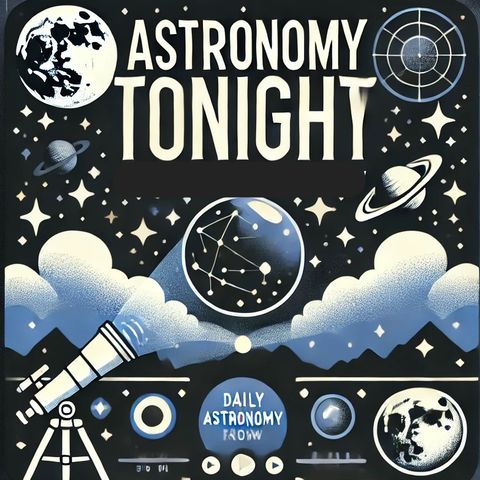Astronomy Tonight for - 10-26-2024

Download and listen anywhere
Download your favorite episodes and enjoy them, wherever you are! Sign up or log in now to access offline listening.
Astronomy Tonight for - 10-26-2024
This is an automatically generated transcript. Please note that complete accuracy is not guaranteed.
Description
Ah, October 26th! A date that shines brightly in the annals of astronomical history. Let's turn our cosmic clock back to October 26, 1959 – a day that quite literally...
show moreOn this date, the first far-side images of the Moon were received on Earth, courtesy of the Soviet spacecraft Luna 3. This was a groundbreaking moment in space exploration and astronomy, as humans got their very first glimpse of the lunar far side, which is perpetually hidden from Earth due to the Moon's synchronous rotation.
Luna 3 was launched on October 4, 1959, and made its closest approach to the Moon on October 6. As it swung around the far side, it snapped 29 photographs over 40 minutes on October 7. However, it wasn't until October 26th that these precious images were finally transmitted back to Earth.
The images were grainy and of poor quality by today's standards, but they were nothing short of revolutionary at the time. They revealed a landscape starkly different from the familiar near side of the Moon. Instead of the large, dark maria (seas) that dominate the near side, the far side showed a heavily cratered terrain with only two small dark spots.
This discovery was so significant that it led to a flurry of new names for lunar features. The largest far-side mare was dubbed Mare Moscoviense (Sea of Moscow), in honor of the Soviet achievement.
Imagine the excitement in the scientific community! Astronomers who had spent their entire careers studying the Moon suddenly realized there was a whole other world to explore. It was like discovering a new continent, except this one was a quarter of a million miles away!
The success of Luna 3 also sparked a new era in the Space Race between the Soviet Union and the United States. It demonstrated that not only could we send objects to the Moon, but we could also use them to gather and transmit valuable scientific data.
So, the next time you look up at the Moon on an October evening, remember that on this date in 1959, humanity's understanding of our celestial neighbor was forever changed. We saw the unseen, and the universe became just a little bit bigger and a whole lot more exciting!
Information
| Author | QP-4 |
| Organization | William Corbin |
| Website | - |
| Tags |
Copyright 2024 - Spreaker Inc. an iHeartMedia Company
